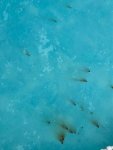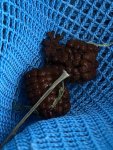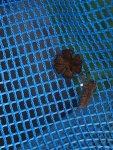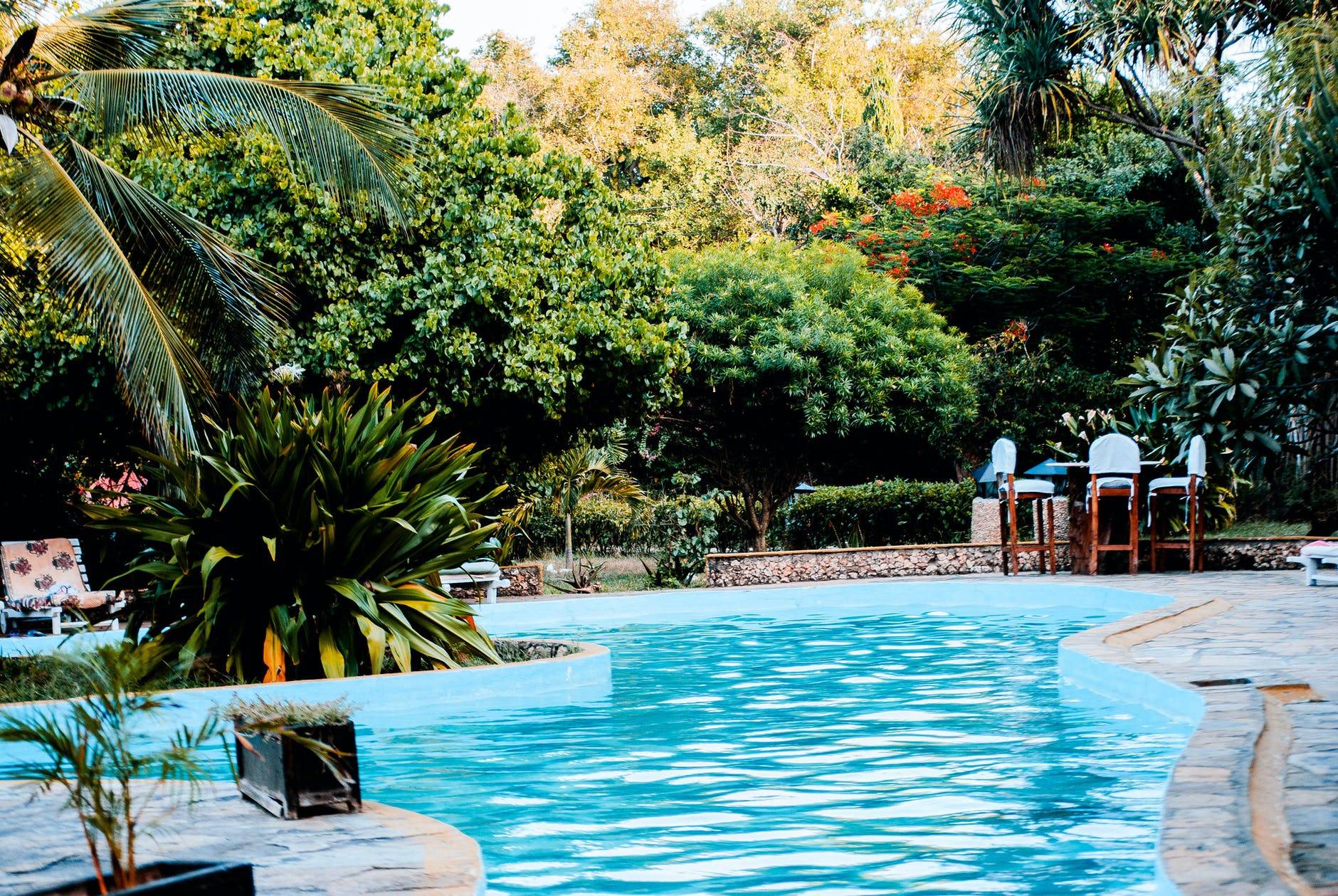Over the last two weeks, I have been experiencing brown stains on the pool plaster. I thought it was fertilizer stains, perhaps blowing over from a neighbor yard, and the only thing that would remove the stain is a diluted muriatic acid application directly to the stain. Then, usually each morning, I would come out and there would be new stains. 
At the heart of each stain is a small brown particle. I fished some out today and wondering what they are: is it animal droppings? tree droppings? They do not appear to be anywhere else, but in my pool. For example, they are not on the deck surface, furniture, etc.


Any help or guidance from someone who has experienced this would be great.
My water chemistry is a whole other kettle of fish as it is out of whack and I was going to post separately seeking help, but I will paste it here. I have had my new test kit for about a month and have taken my readings twice weekly. They have been remarkably stable, but out of whack:
Free Chlorine: 1.5ppm
Combined Chlorine: 0
PH: 7.4
Alkalinity: 100
Calcium Hardness: 500
CYA: it's so high that it is not even reading. On the tester tube, it is at the 19ml mark on the tube, and higher than the highest CYA score.
Saturation index: 0.72
I also have what looks like spots of yellow algae. It brushes off.
Thank you for any help

At the heart of each stain is a small brown particle. I fished some out today and wondering what they are: is it animal droppings? tree droppings? They do not appear to be anywhere else, but in my pool. For example, they are not on the deck surface, furniture, etc.


Any help or guidance from someone who has experienced this would be great.
My water chemistry is a whole other kettle of fish as it is out of whack and I was going to post separately seeking help, but I will paste it here. I have had my new test kit for about a month and have taken my readings twice weekly. They have been remarkably stable, but out of whack:
Free Chlorine: 1.5ppm
Combined Chlorine: 0
PH: 7.4
Alkalinity: 100
Calcium Hardness: 500
CYA: it's so high that it is not even reading. On the tester tube, it is at the 19ml mark on the tube, and higher than the highest CYA score.
Saturation index: 0.72
I also have what looks like spots of yellow algae. It brushes off.
Thank you for any help
Last edited:


 Last time I saw someone post about stains like that, I believe it was determined to be tannin staining from tree droppings. If that's the case with you, maintaining a slightly elevated FC level for your CYA as noted on the
Last time I saw someone post about stains like that, I believe it was determined to be tannin staining from tree droppings. If that's the case with you, maintaining a slightly elevated FC level for your CYA as noted on the 